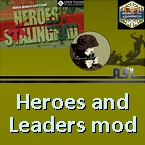Japan Naval Base
The Combined Special Naval Landing Force, combined several Special Naval Landing Force units into a brigade sized unit with greater firepower. There were around five of these when the war ended.
The Base Force or Konkyo-chitai and The Special Base Force or Tokubetsu-konkyo-chitai provided a variety of services both administrative and tactical in areas outside Japan proper, Korea, and Formosa. The Japanese raised around fifty of these units which ranged in size from 250 to 1500 men depending on location and function. The Base Force could also include afloat units.
Defense Units or Bōbi-tai: units of from 250 to 2000 men organized for defense of naval installations and areas of strategic importance within Japan. Some Defense Units included artillery emplacements and some controlled the minefields in Japanese waters.
Guard Units or Keibi-tai: 100 to 1500 men units responsible for ground defense of Imperial Japanese Navy facilities. They were frequently assigned to Base Forces and Special Base Forces. The Japanese raised around one hundred of these units. Many of these units played a notable part in the defense of Japanese held islands during the later stages of the war, such as the Iwo Jima Keibi-tai consisting of 1000 men led by Captain Samaji Inouye.
Anti-Aircraft Defense Units or Bōkū-tai: Anti-aircraft artillery units of 200–350 men. There were three types which differed based on the number and kind of anti-aircraft weapons assigned. The Japanese formed over two hundred of these units which were primarily located in areas outside Japan, Formosa, and Korea. They were usually assigned to Base Forces, Special Base Forces, Special Naval Landing Forces, and Guard Forces.
Construction Battalions or Setsuei-tai built and repaired naval facilities of all kinds, including airstrips, barracks, ammunition bunkers, and fuel depots on remote islands as well as Japan's major naval bases. Most personnel were civilian employees and unarmed. The units also included naval engineers overseeing the operations and sailors guarding the unit, both being lightly armed for defense. The Construction Battalions often made use of local labor whose service was compulsory.
The Communications Units or Tsūshin-tai of 100–2,000 men were stationed ashore to provide communications between Japan's widespread naval installations and to and from the fleets and ships at sea.
The Tokkeitai Navy military police units carried out ordinary military police functions in naval installations and occupied territories; they also worked with the Imperial Japanese Army's Kempeitai military police, the Keishi-chō civil police and Tokkō secret units on matters concerning security, intelligence collection, and counter intelligence.
Anti Aircraft Artillery Batteries or Koshaho Chutai were units of forty or fifty men organized for the air defense of important installations and were subordinate to Air Defense Sectors which in turn were subordinate to Defense Units. These batteries were separate from the previously mentioned Bobitai. Several hundred of them were in existence at the end of the war.























